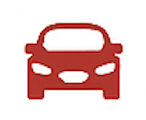Understanding the Complexities of Car Culture in Papua New Guinea
The Role of Vehicles in Everyday Life Across Papua New Guinea
In Papua New Guinea, vehicles play an essential role in bridging geographic isolation. With over 800 languages and mountainous terrain that separates many communities, reliable transportation is a necessity for trade, healthcare access, and social connection. Cars, trucks, and minibuses are vital tools for navigating difficult roads, especially in the Highlands and remote coastal areas.
Public transportation is limited, and many rural areas rely on privately owned vehicles to reach essential services. In the absence of well-developed transport networks, the vehicle—often a rugged 4WD or Toyota Land Cruiser—becomes a community asset. It is not uncommon for a single vehicle to serve an entire village, with scheduled trips into towns for supplies, medical visits, or school commuting.
Used Cars and the Second-Hand Market in PNG
Papua New Guinea imports the majority of its vehicles, and the second-hand market is the dominant channel through which cars reach ordinary consumers. Many used cars originate from Japan or Australia, entering PNG through major ports such as Lae and Port Moresby. Japanese imports are especially popular due to their affordability, fuel efficiency, and availability of parts.
Port Moresby has developed a sizable used-car dealership ecosystem, with many lots clustered around the city center and industrial zones. Buyers often rely on word-of-mouth, community recommendations, and local mechanics to assess vehicle condition. Mechanical integrity is vital, as road conditions can rapidly deteriorate a poorly maintained car.
Driving Conditions and Infrastructure Challenges
Road infrastructure in Papua New Guinea presents significant challenges for drivers. Outside of a few urban centers, most roads are unsealed, riddled with potholes, and prone to washouts during the rainy season. The Highlands Highway, the country's most critical transport corridor, frequently suffers from landslides and maintenance delays.
These conditions have made 4WD vehicles not just preferable but often essential, particularly for accessing rural health posts or transporting agricultural goods to markets. Drivers must be highly skilled and adaptive, often navigating narrow mountain passes or crossing rivers with little more than a plank bridge.
Urban congestion is also an issue in cities like Port Moresby and Lae, where road expansion has not kept pace with rising vehicle ownership. Traffic jams during peak hours can significantly slow down business activity, especially with the growing number of delivery and logistics vehicles operating in urban centers.
Public Motor Vehicles (PMVs) and Community Transportation
Public Motor Vehicles, known locally as PMVs, are a backbone of Papua New Guinea's informal public transportation system. These minibuses and open-back trucks follow loose schedules between towns and villages, and are often independently owned. PMV drivers are key community figures, especially in remote areas where access to hospitals or schools depends on their reliability.
Fares are generally affordable, but comfort and safety vary greatly. Overcrowding is common, and passengers may ride with cargo, livestock, or tools. Despite these conditions, PMVs are indispensable for many Papua New Guineans and represent one of the few accessible mobility options for those without personal vehicles.
The routes PMVs operate on are not standardized by government agencies, and maintenance is the responsibility of the owner. This creates inconsistency in service reliability, but it also allows local entrepreneurs to adapt their services to community-specific needs. In some areas, PMVs also double as mobile supply trucks, bringing food, fuel, and construction materials to isolated areas.
Cultural Adaptations and Automotive Customization
Car culture in Papua New Guinea includes a distinctive local flair. It is common to see vehicles decorated with family names, clan symbols, flags, or religious messages. In many cases, the aesthetic personalization of vehicles communicates social status, regional pride, or religious affiliation.
Sound systems are another popular customization. In urban centers, especially among younger drivers, outfitting a vehicle with powerful speakers and playing reggae, gospel, or local stringband music at high volume is a form of self-expression. This often becomes part of social gatherings, especially on weekends or during cultural festivals.
In some regions, cars are even included in ceremonial activities such as bride price exchanges or funerals. A vehicle may be loaned as part of a gift package or used in processions that honor key life events. This demonstrates the symbolic as well as practical value vehicles hold in society.
Fuel, Maintenance, and the Cost of Ownership
Fuel prices in Papua New Guinea are among the highest in the Pacific region, especially in inland areas where transportation costs drive up the price per liter. In the Highlands, fuel delivery is often subject to weather conditions or security risks, further complicating the supply chain.
Vehicle maintenance can be expensive and logistically difficult. Spare parts are frequently imported, leading to delays and high costs. Local mechanics are skilled at improvising repairs, and many car owners develop informal networks of trusted repairmen. The durability of a vehicle is a key factor in purchase decisions, sometimes more important than appearance or model year.
Despite these hurdles, vehicle ownership continues to rise, particularly among small-business owners, farmers transporting goods, and urban professionals. Microfinance and installment payment schemes have made it more feasible for working-class families to purchase vehicles, contributing to the diversification of car culture across income levels.
